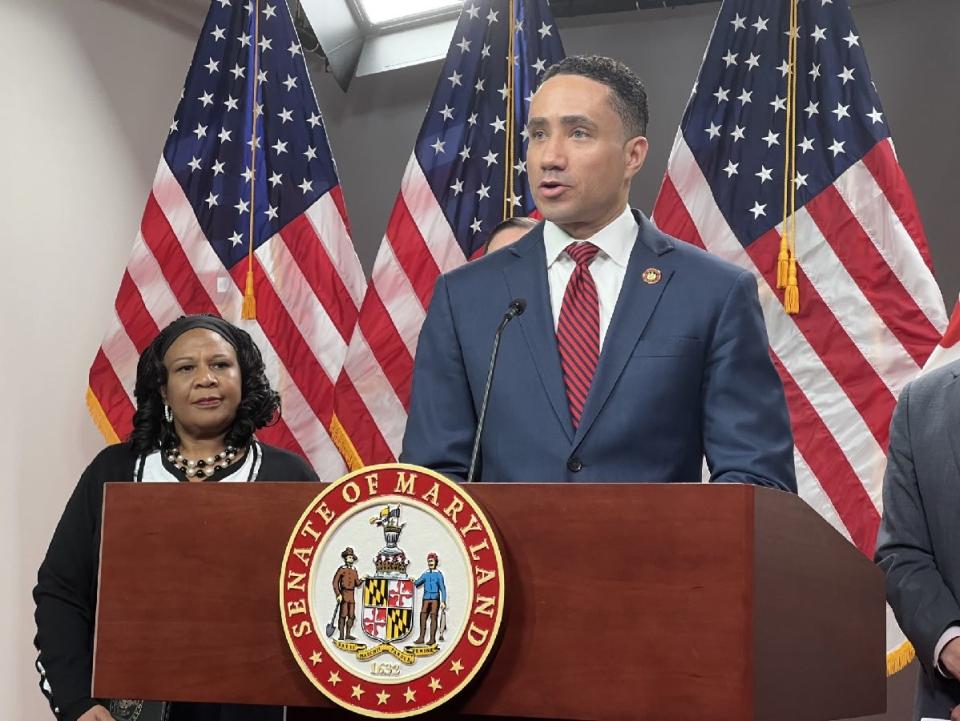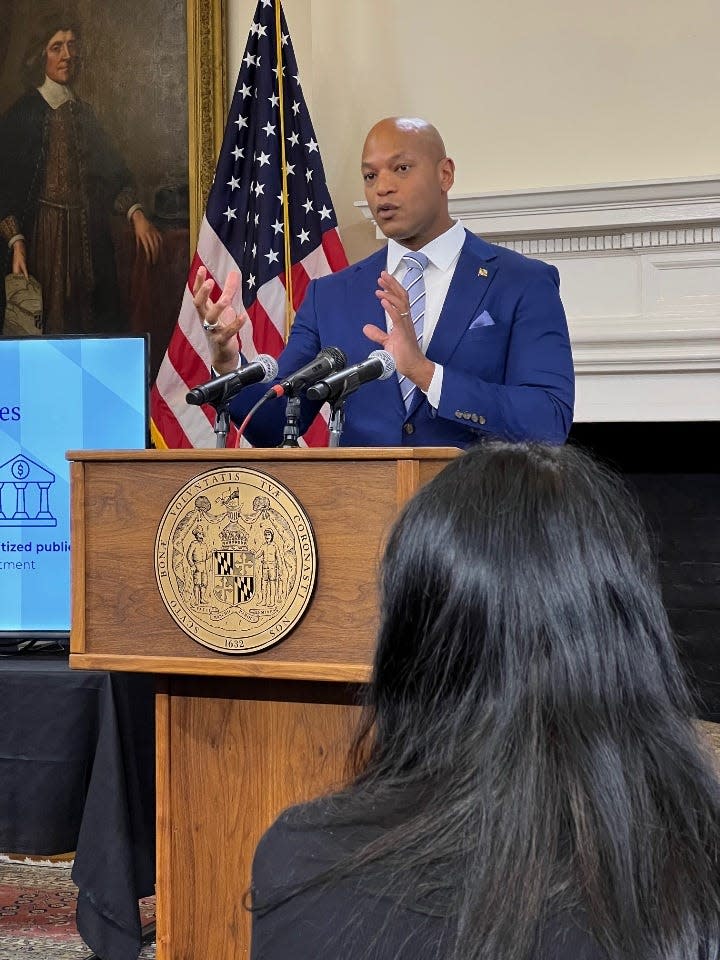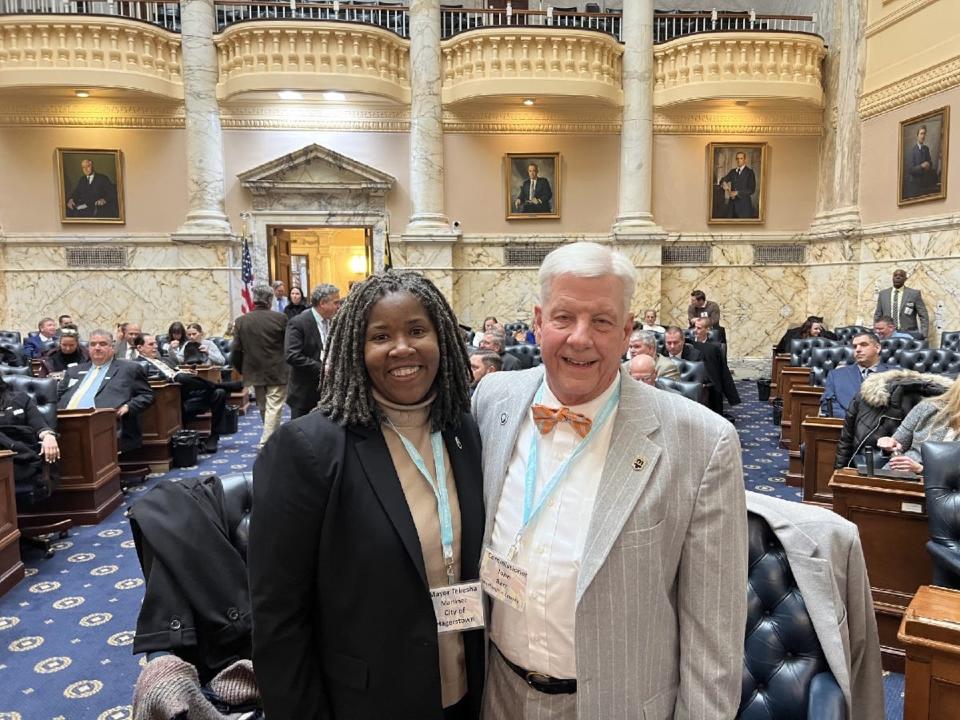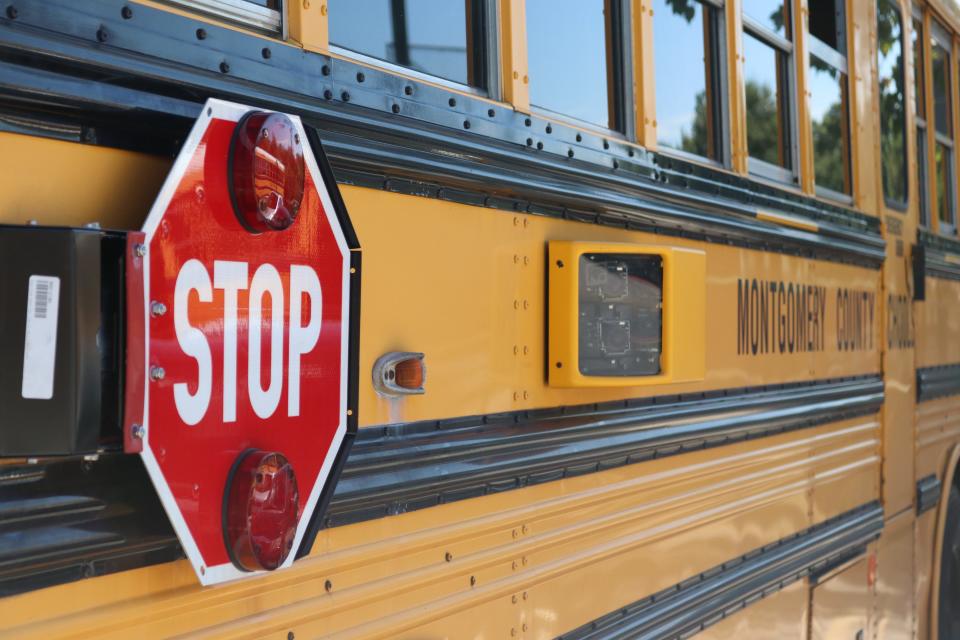Annapolis lawmakers talk juvenile crime. Is upping school attendance part of the solution?
As the Maryland General Assembly continues to consider legislation to address juvenile crime, the Senate committee tasked with tacking such topics highlighted a related issue even more fundamental than student achievement: school attendance.
Statewide, over a quarter of Maryland’s kindergarten through 12th grade students (29.8%) were “chronically absent” in school year 2022-2023. The new interim state superintendent of schools defined that term before members of the Senate Judicial Proceedings Committee last week.
“Chronic absenteeism is when children miss 10 percent or more of their school days,” said Carey Wright, during testimony to the committee at a Jan. 18 hearing in Annapolis, “So, if you have 180 days in a school year, you’re talking about 18 days or more of absence.”

She noted that chronic absenteeism included both unlawful and lawful absences (i.e.-illness, death in the immediate family, etc.), highlighting a distinction with truancy that only counts unlawful absences.
In 2023, about 7 percent (6.9%) of Maryland’s students were truant, meaning they had missed more than 20 school days in the year unlawfully, 15 days in a semester or eight days in any quarter.
The state’s truancy percentage was down from a peak of 9.9% in 2021, the first school year that started virtually due to the pandemic, but last year’s rate still represents almost a doubling from the rate of 3.5% in 2019, the school year that preceded the pandemic.
And while Maryland is not alone in these attendance challenges, jurisdictions across the state and the country are trying to get a handle on the latest iteration of this phenomenon of absences that can sometimes connect to instances of juvenile crime, and which has a direct link to the country's future.
“Students involved in the juvenile justice system typically have high levels of chronic absenteeism,” said Robert Balfanz, a professor at Johns Hopkins University School of Education. He noted many of the human connections in schools were lost during the pandemic period. “It doesn’t just rebuild itself,” he said, “We need intentional efforts to rebuild those relationships.”
More: Maryland legislative preview: What are top public safety priorities in 2024?
Maryland governor speaks on absenteeism at White House event

During an event on “Improving Student Achievement” hosted by United States President Joe Biden’s Secretary of Education Miguel Cardona in Washington, D.C., Maryland’s governor brought the state’s attendance challenges to the national spotlight.
“We know that there are real obstacles we still have to address,” said Democratic Gov. Wes Moore, on a Jan. 17 panel held at the Eisenhower Executive Office Building, adjacent to the White House, “In Maryland alone, we have an absenteeism rate that hovers around 28 percent.”
That number, confirmed as 29.8% by a Maryland Department of Education spokesperson for the 2022-2023 school year, is still below the national average of absenteeism from the previous year.
“Across the country, the rate of chronic absenteeism reached about 31% in 2021-2022,” a White House Fact Sheet said. The document named the pandemic and associated school closures as causes of the high rate and indicated the effects of absenteeism can be significant declines in math and reading test scores.In Maryland, during the 2016-17 school year, the rate was 18.3%, according to a 2018 article from The Baltimore Sun.
In a phone interview, Balfanz cited general disengagement, students doing other things (i.e.-working jobs or caring for elders or siblings), and students avoiding anxieties at school (i.e.-bullying) as several of the reasons for chronic absenteeism.
More: Gov. Wes Moore seeks to change the equation on education, employment
Transportation, language barriers may be factors in absences
Schools in the nation’s capital saw chronic absenteeism rate of 43% last school year, down from 48% the previous year, and the local board of education there held a hearing earlier this month to address the issue. Balfanz pointed out one reason why rates may be higher in some jurisdictions like D.C. or Baltimore.
“City bus routes weren’t mapped to deliver kids to school,” he said, “They were mapped to move adults around the city. So therefore, it’s not the case that you just walk outside your door, there’s a bus stop, and it drops you off at your school.”
Like D.C., the schools in Maryland’s most populous city similarly saw a year-over-year decline, but still maintained chronic absenteeism rates above the national average.
“Baltimore City Public Schools made significant gains in reducing the chronic absenteeism rate,” said a school system spokesperson, Sherry Christian, in an email. “Overall, City Schools reduced its chronic absence rate by 4- percentage points, from 58.1% in 2022 to 54.1% in 2023.”
She pointed to the district’s Multilingual Enrollment and Support Center that offers connections with community resources as an aid in increasing attendance for multilingual students. Year-over-year attendance rates increased for Hispanic students as hundreds of families worked with the center.
More: Transportation top issue as Washington County comes to capital for 'Day in Annapolis'
28% in Washington, Wicomico counties ‘chronically absent’
And while the chronic absenteeism rates are about 10 percentage points higher in Baltimore City, where many students either walk or take Maryland Transit Administration public transportation to school, the rates in the state’s other jurisdictions, including on the Eastern Shore, are significant too.
Wicomico County’s chronic absenteeism rate last school year was near the state average at 28%. Washington County, in Western Maryland, had the same rate of 28%, meaning over 5,000 of the district’s school children were chronically absent.
The Mayor of Hagerstown, Washington County’s largest city, attributed the absenteeism to “conflict” and emphasized parents’ role in children’s attendance.
“This is what made sure I made sure my teen daughters got to school on time,” said Hagerstown Mayor Tekesha Martinez, a mother of five, “I didn’t want to go to court.”

“I don’t want to scare parents with even more of that,” said the second-year mayor and congressional candidate in an interview at the State House in Annapolis on Jan. 23, “but we definitely need some accountability.”
Truancy Reduction Court Program: Will it be further replicated?
Montgomery County Circuit Court Judge Kathleen Dumais told the Senate committee Jan. 18 that of the approximately 168,000 students in Montgomery County School System, over 20 percent of the student population, meaning over 30,000 students in that school system, are chronically absent. That county’s chronic absenteeism rate for last school year was 25.3%, according to the presentation from the interim state superintendent of schools.
The judge said some of these children come before her in proceedings, and called some of their stories “heartbreaking,” describing one instance of a young person under the influence of drugs.

During the hearing, the former state legislator Dumais called for a local bill for her county modeled after a “truancy reduction program” that already exists in Wicomico, Worcester, Dorchester and Somerset counties, as well as Harford, Kent and Prince George’s counties.
The program, a four-step process typically over six-to-nine months, according to its website, now known as the Truancy Reduction Court Program began in Wicomico County in December 2004. Somerset County started the program in 2005, while Worcester and Dorchester counties began in 2007.
Over 200 children in those counties were served by the program last fiscal year, according a Judiciary spokesperson, and 116 children were formally admitted to the program, including 44 in Wicomico County.
The goals of the truancy court are two-fold, according to Terri Charles, a Maryland Judiciary spokesperson. In an email, she said the first is to “look at root causes of a child’s truancy and school disengagement” and the second is to “design and implement services that engage the child and family with the child’s education, and thereby increase attendance and success in education.”
More: Long promised by Moore, state's service year option program starts off with launch event
Poverty may be at play in absenteeism, but what are solutions?
Still, Somerset and Dorchester counties rates were above average at 37.2% and 42.2%, respectively. Three of the four jurisdictions in the state with the highest rates of chronic absenteeism for students also ranked in the top three according to one poverty metric last year.
According to that metric, Somerset County, on the Eastern Shore, ranked first in the state.
In a statement, Victoria Miele, the public information officer for Somerset County Public Schools, noted the jurisdiction’s “high rate of economically disadvantaged families.” She said the district uses “Concentration of Poverty funds,” provided under the state’s Blueprint education law, to offer additional services in six of eight schools to remove barriers to attendance.
“Faculty receive training on ways to build and improve teacher-student relationships that encourage student attendance,” said Miele, in an emailed statement.“Our parent outreach staff in each school work directly with families to identify unmet needs that could be a barrier to regular attendance.”
Gov. Moore touts housing package: Maryland Gov. Moore touts housing package as economic boost as it nears introduction
But chronic absenteeism is not just a problem for the poor in the state, but rather the wider public. The only jurisdiction in the state with a chronic absenteeism rate under 20% last year was Howard County.
Chronic absenteeism is the highest and attendance rates are the lowest among the state’s high school students, the interim state superintendent’s presentation showed.
The professor, Balfanz, calls chronic absenteeism something that “sort of sneaks up on you.”
“Parents and adults tend to underestimate how much school has been missed by about half,” Balfanz said.
“People think in very short-term windows,” he said, “not fully recognizing if you just missed two days a month, every month, you’ve missed 20 days in the school year.”
Balfanz pointed to the use of college work-study or Maryland Service Year Option participants in schools as a potential way to increase students attendance. “For a subset of schools, they are going to need that additional people power in there,” he said.

Something as simple as “nudge letters,” informing students and their families of school absences, the professor said, too can make a difference.
“Just giving people the facts about how many days they missed can alone help increase attendance,” Balfanz said.
Dwight A. Weingarten is an investigative reporter, covering the Maryland State House and state issues. He can be reached at dweingarten@gannett.com or on Twitter at @DwightWeingart2.
This article originally appeared on Salisbury Daily Times: 29% of Maryland students ‘chronically absent.’ Now what's being done?

